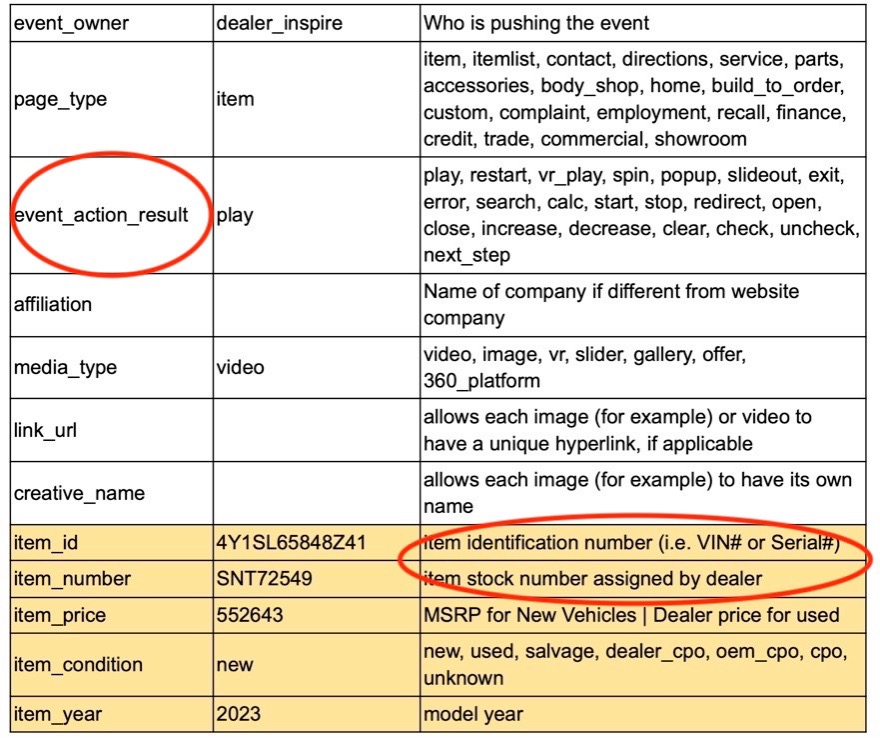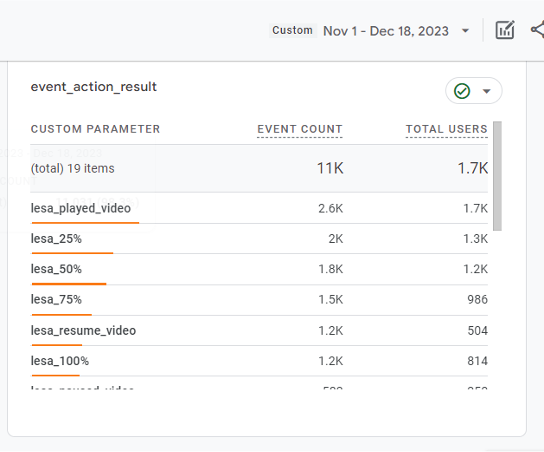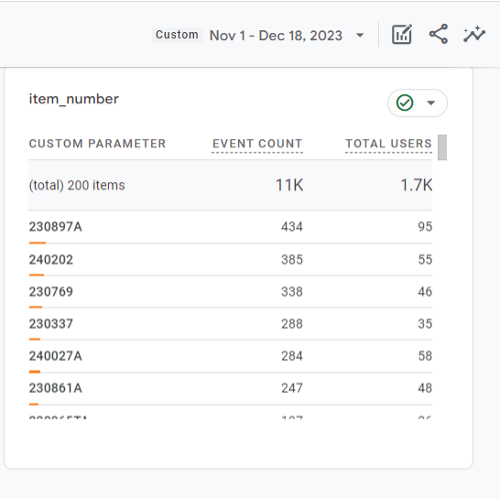GA4 is here! Part 2

Part 2: How to make GA4 tell a story about interest in your inventory
When we left off, Google’s scary-exciting new analytics platform, GA4, had launched and was still somewhat shrouded in mystery. It promised to provide deeper insights into customer behavior than its predecessor, Universal Analytics, and tell the story of what takes place on your dealership’s website based on specific events rather than simply measuring users’ session time.
Since then, we’ve had a chance to explore the GA4 landscape and figure out how to help our customers navigate it to their best advantage. In this blog, we’ll introduce you to a new industry standard that is rapidly becoming mandatory and fill you in on specific need-to-know details about setting up GA4 so you can see and interpret your data.
The Automotive Standards Council for GA4
In response to the new GA4 event-based reporting challenges (and there have been many!), industry leaders have come together to form the Automotive Standards Council. Its objective: to set “a universal groundwork for implementing Google Analytics 4 into the industry.” By creating standard reporting categories, the ASC aims to promote transparency, enable an even statistical playing field within the automotive industry, and make it easier for dealers to understand the meaning of their data.
LESA is proud to be a founding member of the ASC, and as such has already taken a leadership role in shaping the standards for auto industry analytics. We are among a distinguished group of major players making up the Council that meet and discuss strategy, ultimately determining how stats will be delivered to Google Analytics.
The Council has identified six main ways in which its work will benefit the industry:
- Achieve greater data integrity
- Major web platform support
- Enabling vendors to add their own unique event categories to GA4
- Reliable roll-up reporting
- Improved performance of Google Ads campaigns
- Pin-pointed conversions by department and conversion outcomes
You can check out these benefits in greater detail by clicking here.
What does this have to do with seeing your data in GA4?
One of the first questions dealers ask now is whether a potential vendor complies with ASC standards. LESA not only complies with ASC, but we are also part of the organization itself, actively participating in creating the new standard that is taking root and becoming an expectation of any media entity that does business with a dealership. In fact, we are leading the charge; to date, none of our competitors have stepped up to take part in the ASC.
LESA’s status as a founding member of the ASC enables dealers and web providers to have complete confidence in our ability to assist with setting up GA4 parameters and educating our customers about how to use the new platform. In short, dealers want and need to work with vendors that comply with ASC standards, and LESA is uniquely qualified to satisfy this requirement.
Disappointingly, GA4 has proven to be quite user-unfriendly. Receiving ASC events is definitely not turn-key and absolutely requires configuration. As an expert on ASC standards, we’ll walk you through setting up the GA4 dashboard events that matter to you. Data must be sent to GA4 using the ASC standardized event structure, as this enables the channeling of stats, so it’s critical that you are set up correctly to receive data from LESA.
What you need to know right now
Two things: Custom Definitions, and ASC Media Interaction Events.
First, ASC standards must be set up by creating Custom Definitions. If these parameters are not set up, you will be unable to see any ASC data coming in from any vendor. Your LESA rep can check to see if this has been done, and assist you as needed.
Next, you need to become familiar with the ASC Media Interaction Events category. This is LESA’s category, and it’s where you’ll see your stats about photos, video, and 360 spin.
Media Interaction Events contains the sub-category Event Action Result, where specific LESA events are clearly identified. Take a look at this ASC specification table that breaks out a portion of the ASC Media Interaction event sub-categories, including specific vehicle identification.

When you drill down into the Event Action Result sub-category in GA4, you’ll see “lesa_” in front of our event actions. For example, the played_video event action will be listed in GA4 as “lesa_played_video”.
Here’s a partial screenshot:

This is where GA4 begins to shine! You’ll see data broken down into distinct events, such as whether a video was played, how long it was played, whether the Carfax button was pressed, and so on, as it relates to a vin-specific vehicle identified by its stock number, AKA “item_number.”
For instance, let’s say you just added a 2023 Ford Bronco to your website. You’ll be able to see how many people looked at the vehicle on your website, where they came from – for example, Facebook — how many times the Bronco’s video was played, how many VDP views it received, etc.
The benefit of the new ASC standard is that now you can track all activities related to interest in a specific vehicle. Rather than simply tracking website user traffic, you can now see where the web traffic is coming from, identify trends (e.g., How much interest is there in sedans vs SUVs this month?), and track which actions shoppers take with respect to specific vehicles once they land on your site. All of this new information will help with monitoring ad spend efficacy and enable you to balance your vehicle inventory according to measurable consumer interest.
ASC Media Interaction Events are sent to GA4 when a shopper views a vehicle on any page, and the types of media tracked include video, photos, and 360 spin. You’ll even be able to track which type of media was viewed on which page.
Here’s a current list of the LESA events you’ll be able to track:
|
|
|
|
|
|
|
|
|
|
|
|
|
|
|
|
| |
You’ll also be able to track the general amount of interest in specific vehicles, identified by their item number, by viewing the number of ASC events each vehicle accrues and the number of users engaging with its content. Here’s a sample screenshot:

Lots of granular parameters have been standardized via the ASC that show relatable values and user interactions in fine detail. Together, these data illustrate a flow of events that tell a captivating story about your website activity and, most importantly, the level of interest around each specific vehicle.
One and done!
If you’re not loving all this talk of categories and sub-categories, there is a little good news. You only need to set up your ASC standards once. ASC is not part of native GA4, but rather a package of custom stats that dealers care about and that must be installed by someone. Your ad agency or website provider may already have taken care of it if they are part of ASC. But if you’re not sure, or you know that you still need to install ASC standards, we’re here to help.
Is that it?
We’re really just at the beginning of the beginning with GA4. Together with our ASC industry allies, we’re going to be working on shaping the standards to enable the data we collect to tell us as much as it can about buyer interest in individual vehicles. We fully expect these insights to inform a host of improved marketing strategies and inspire developments in new media tools.
Feeling just a bit nostalgic for session time stats? Although GA4 is event-based in its approach to data, LESA is working with our ASC colleagues to see if we can create a category for time measurement so that we can see how this value fits into the data story.
Session times as we knew them may or may not return, but a new way of thinking about time as a factor of engagement is a glimmer on the horizon. And as GA4’s novel approach to measuring engagement brings us closer to correlating events and sales, and farther from merely tracking time spent on a site, we are learning how to coax from it the story we want it to tell.
Stay tuned!

